It looks like you're using an Ad Blocker.
Please white-list or disable AboveTopSecret.com in your ad-blocking tool.
Thank you.
Some features of ATS will be disabled while you continue to use an ad-blocker.
5
share:
from CNN and
MIRROR
Instead of rocket-powered sub-orbital flights like those of Virgin Galactic, could high-altitude ballooning become the most viable way of letting paying tourists experience space -- or at least something thrillingly close to it?
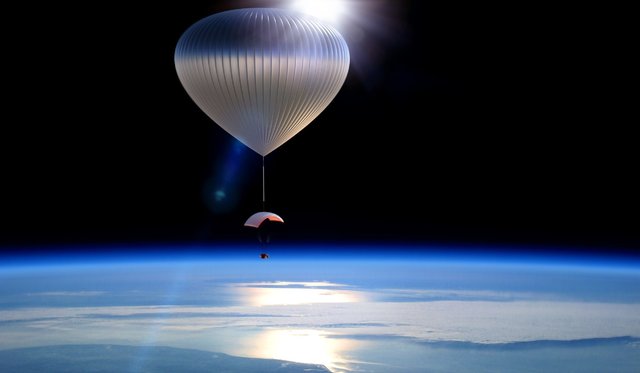
Ballooning is already tried and tested technology -- "It's the origin of space travel," explains Annelie Schoenmaker, external relations and legal officer for Zero2infinity, a Spanish company that plans to launch passengers to near space using balloons known as "Bloons" for €110,000 ($124,000) a time.

Zero2infinity is one of two organizations hoping to use pressurized capsules suspended beneath helium balloons as a way to take tourists into near space.
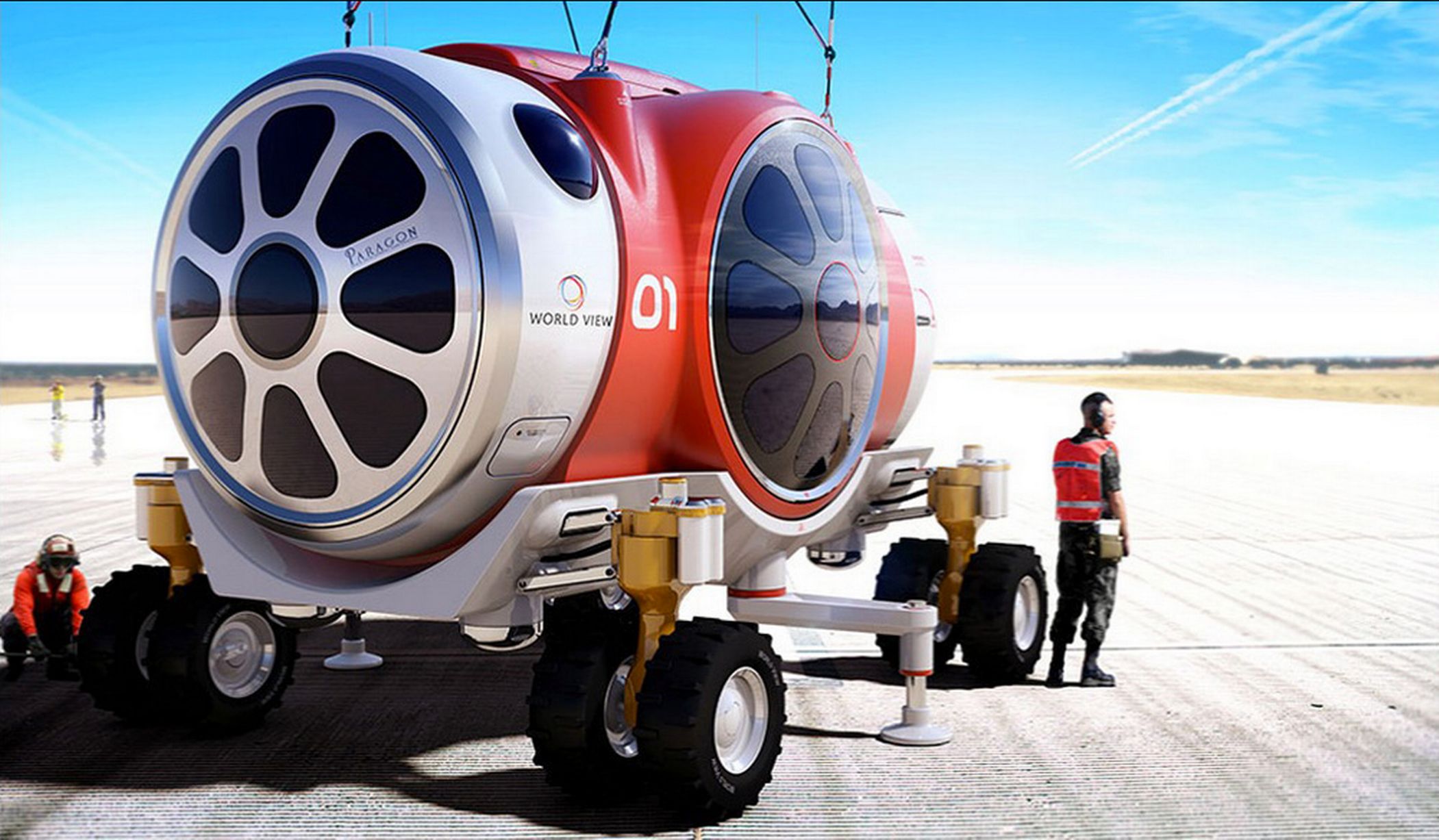
One of the capsules
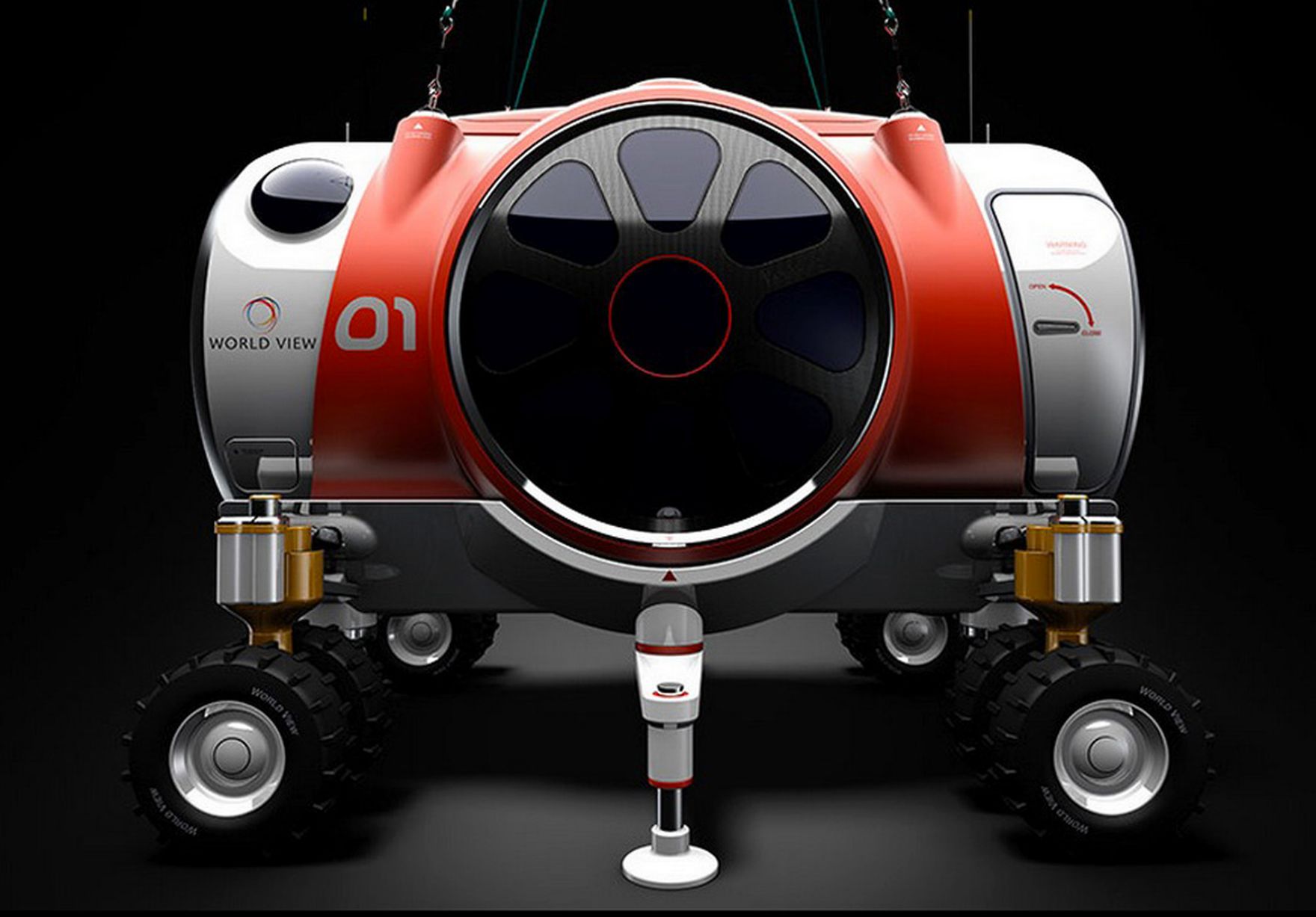
The capsules are completely sealed, allowing for full pressurization at altitudes. "Our capsule is fitted with state-of-the-art space-rated life support systems, designed and manufactured by Paragon Space Development Corporation, who are global leaders in life support technology," says Poynter, of the World View system.
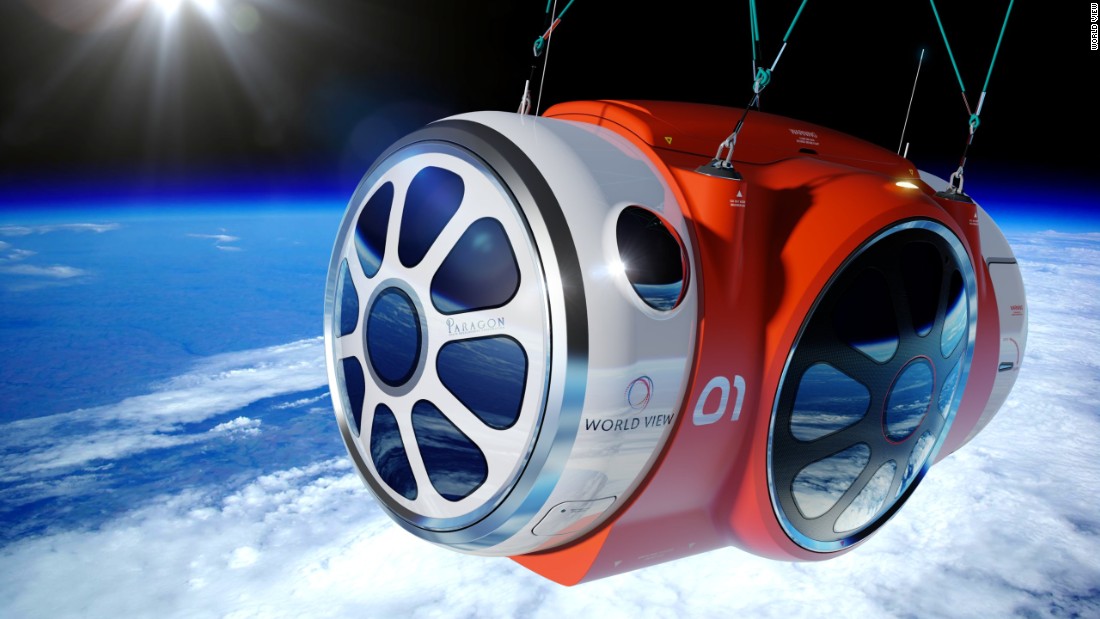
With extensive unmanned testing already underway, the hope for World View is that it could launch as soon as the end of 2016, with Bloon expecting to begin flights in the next few years.
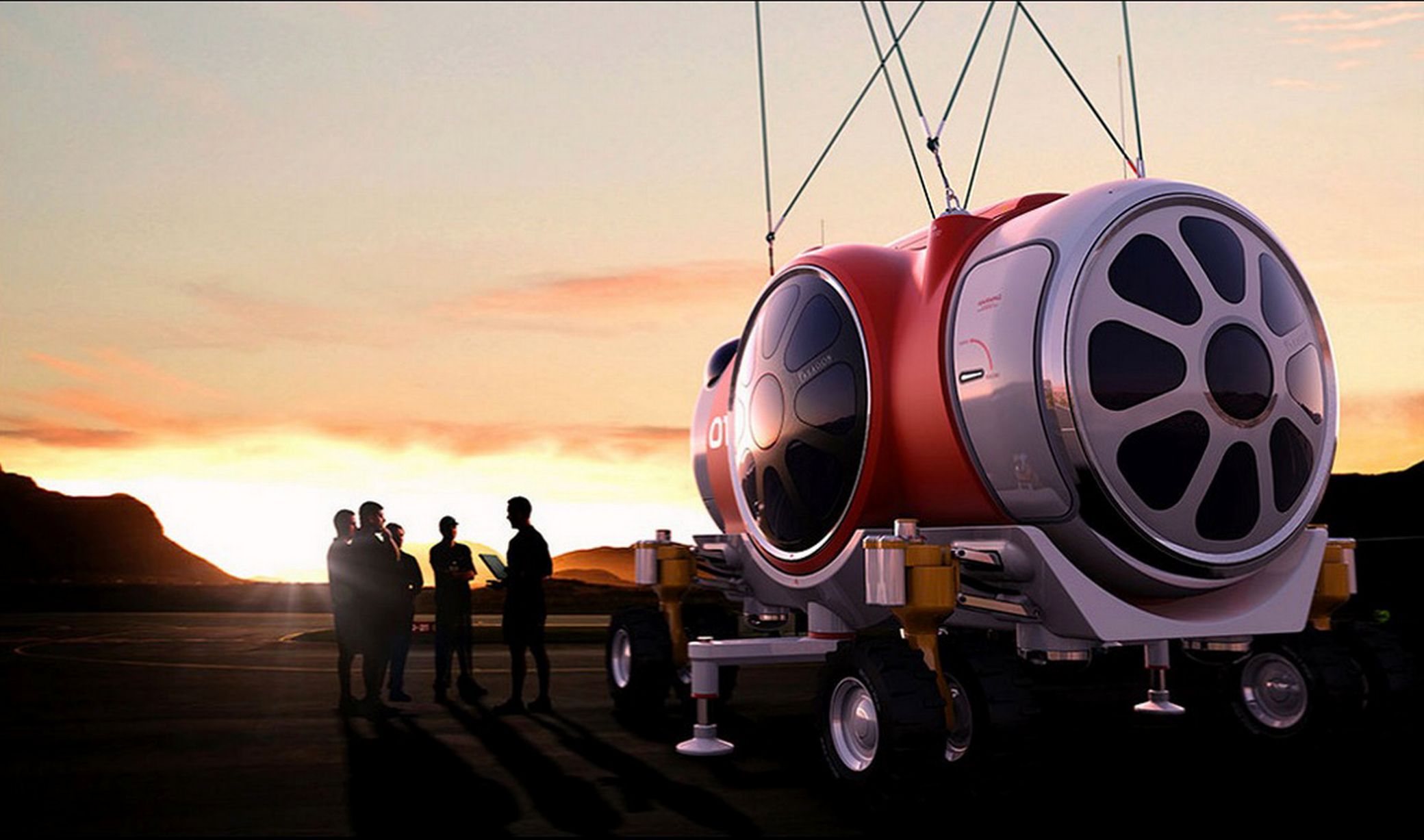
Well now..THIS looks fun...Count me in... Now to save up the $75,000!
Instead of rocket-powered sub-orbital flights like those of Virgin Galactic, could high-altitude ballooning become the most viable way of letting paying tourists experience space -- or at least something thrillingly close to it?

Ballooning is already tried and tested technology -- "It's the origin of space travel," explains Annelie Schoenmaker, external relations and legal officer for Zero2infinity, a Spanish company that plans to launch passengers to near space using balloons known as "Bloons" for €110,000 ($124,000) a time.

Zero2infinity is one of two organizations hoping to use pressurized capsules suspended beneath helium balloons as a way to take tourists into near space.
Because balloons can spend a relatively large amount of time in the stratosphere, this "gives increased observation and experiment runs," explains Jane Poynter, CEO of World View, which will offer near-space ballooning trips for $75,000. High-altitude ballooning even has some high-profile fans within the space community, including veteran of four space shuttle missions, Mark Kelly, who works with World View as director of flight crew operations.

Of course, it's not actually space -- balloons only travel to a height of between 30-40km, with 36km being seen as optimum; to reach what is defined as space, you need to travel to a height of 100km. "But it is pretty close and it gives you a totally different experience," says Michael Lopez-Alegria, former NASA astronaut and president of the Commercial Spaceflight Federation.
You are still high enough that you are above 99% of the Earth's atmosphere and although you don't experience weightlessness, you are able to see something that most humans haven't -- the "Thin Blue Line" of the Earth's atmosphere. Passengers would also be able to see the Earth in the blackness of space, as well as the sun rise over the curvature of the planet.
"Our goal is to provide as many people as possible with a perspective-changing view of our planet" adds Poynter.
The science behind sending humans to the edge of space is much the same as sending any other payload. "It's very easy," says Schoenmaker, "put in helium, release the balloon and up it goes, very slowly."
One of the capsules

The capsules are completely sealed, allowing for full pressurization at altitudes. "Our capsule is fitted with state-of-the-art space-rated life support systems, designed and manufactured by Paragon Space Development Corporation, who are global leaders in life support technology," says Poynter, of the World View system.

Balloons can in theory launch from anywhere in the world, as long as the weather is favorable. Unlike rockets, there is no big acceleration, with a balloon taking between 1.5-2 hours to reach maximum altitude. Once there, inside a capsule attached to the balloon, crew and passengers can bob along on the edge of our atmosphere for up to two hours. Once built, both the Bloon and World View cabins will have toilet facilities and you'll even be able to dine on board.
World View plans to take six passengers and two crew at a time, while Bloon hopes to take up to four passengers and two crew, though the role of the crew is described by Schoenmaker "as more for passenger support and a precaution if something goes wrong."
To return to Earth, helium is vented from the balloon, then a ParaWing, which is already deployed, takes over the remainder of the descent. Schoenmaker explains: "For safety, we also have a further two back-up chutes." The descent back to Earth takes around an hour, meaning there is no big acceleration, with the capsule landing in a predetermined location, guided back to Earth by a pilot and the support of mission control.
The ultimate aim for near-space ballooning is that the experience will be comparable to getting on a commercial airliner. Passengers would be inside a pressurized environment, just like on a plane. However, whether passengers would still need to wear spacesuits will depend on certification from authorities. As with other forms of commercial space travel, in the United States balloons to the stratosphere are regulated by the FAA (Federal Aviation Authority), under the Office of Commercial Space Transportation -- although for flights in Europe, regulation is not yet defined.
With extensive unmanned testing already underway, the hope for World View is that it could launch as soon as the end of 2016, with Bloon expecting to begin flights in the next few years.

Well now..THIS looks fun...Count me in... Now to save up the $75,000!
Why can't they come up with a solution that costs that of a plane ticket?
A $75,000 dollar price tag seems reasonable when compared to the cost of a Virgin Galactic flight. But the only way to really get the funding space programs need, is to make it as accessible to the public as possible. $75,000 dollars is not something a lot of people have.
Cost aside, I'd love to go for a ride in that capsule. It would be the most amazing 5 hours ever.
A $75,000 dollar price tag seems reasonable when compared to the cost of a Virgin Galactic flight. But the only way to really get the funding space programs need, is to make it as accessible to the public as possible. $75,000 dollars is not something a lot of people have.
Cost aside, I'd love to go for a ride in that capsule. It would be the most amazing 5 hours ever.
originally posted by: EternalSolace
Why can't they come up with a solution that costs that of a plane ticket?
A $75,000 dollar price tag seems reasonable when compared to the cost of a Virgin Galactic flight. But the only way to really get the funding space programs need, is to make it as accessible to the public as possible. $75,000 dollars is not something a lot of people have.
Cost aside, I'd love to go for a ride in that capsule. It would be the most amazing 5 hours ever.
Agreed! The price is CRAZY but in time who knows..It would be AMAZING though.
Neat skids to land on. I prefer wings to a parachute (like a glider of sorts) and a parachute on my back if something goes amiss…
Thats a long free fall if the chute collapses (or freezes). It would be like the Challenger crew, alll the way down.
Thats a long free fall if the chute collapses (or freezes). It would be like the Challenger crew, alll the way down.
originally posted by: EternalSolace
Why can't they come up with a solution that costs that of a plane ticket?
A $75,000 dollar price tag seems reasonable when compared to the cost of a Virgin Galactic flight. But the only way to really get the funding space programs need, is to make it as accessible to the public as possible. $75,000 dollars is not something a lot of people have.
Cost aside, I'd love to go for a ride in that capsule. It would be the most amazing 5 hours ever.
Cars were very expensive compared to feet & horses back when they first started out as well. So were trains. All things start out pricy before they level off, it's just the literal price of innovation. Material costs also rise & fall, too, that's generally always been beyond the buyer's negotiating abilities. Over time, as more people pay for the vehicles (or trips in this case) the more people they can spread the cost over, and the less an individual pays.
A good way to think of this is to remember how outrageously expensive microwaves, TVs, computers & even laptops used to be. They're not so horrifically high-priced anymore for modest versions, are they? My dad's first mid-range laptop was bought on the cheap for over $2k, while I paid under $400 for the one I'm typing on. Chew on that comparison for a minute!
That said, when this is around a few grand to do for everyday folks, I'll gladly do whatever it takes to get the fam on that capsule. There's some once-in-a-lifetime experiences that shouldn't be skipped if they can be attained with some planning
new topics
-
Just spotted an unusual aircraft Melbourne Australia
Aliens and UFOs: 1 hours ago -
The truth lets admit it
Aliens and UFOs: 6 hours ago -
Mass Shooting Towson, Maryland - 7 shot, 1 possibly dead
Social Issues and Civil Unrest: 9 hours ago
top topics
-
Trump formally clinches Electoral College victory
2024 Elections: 14 hours ago, 17 flags -
What's the buzz
General Chit Chat: 17 hours ago, 8 flags -
Mass Shooting Towson, Maryland - 7 shot, 1 possibly dead
Social Issues and Civil Unrest: 9 hours ago, 5 flags -
Elon Musk has Meeting with Nigel Farage at Mar-a-Lago
Regional Politics: 17 hours ago, 4 flags -
The truth lets admit it
Aliens and UFOs: 6 hours ago, 3 flags -
Just spotted an unusual aircraft Melbourne Australia
Aliens and UFOs: 1 hours ago, 1 flags
5

